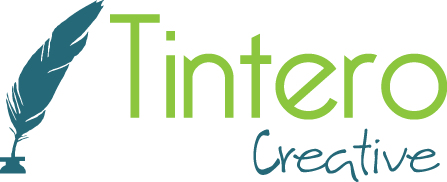The Basics Of How To Write A Good Blog To Promote Your Business
Blogging is no longer something that business owners can ignore. Honestly, those who embraced it years ago are way ahead of the game, but that doesn’t mean that blogging is impossible or should be ignored. There’s a ton of value to blogging and we’ll be talking through it today.
The “How” of Blogging on WordPress
Blog Title
Just as email marketers stress over the subject line for an email, so too, should you focus on creating a strong title for your blog. It’s the “make or break” moment for if someone will read your blog.
Subheading
Every blog should have a subheading at the beginning of the blog that has some strong key words in it. Label it as an H2 type text, which will help search engines easily index this text.
Body of Blog
There are tons of opinions on the exact length that is ideal for blogs. Some say the longer the better, because most people write short blogs. Search engines may see more meat to your blog as an indication that you are more relevant. Others argue that many micro-blog posts that are short, but you have many of them, is better. I tend to lean toward the 500-750 range of word count. I’ve found that this is enough to be meaty and provide substance, but not lose your audience.
Types of Blog Structures
There are a number of different types of writing structures, but the most important features are that the blog post is easy to read. Therefore bullet point lists, numbered lists, and shorter paragraphs are great. On average, we have attention spans that are less than that of a goldish, so keep it short, concise, and easy to read.
Include Media
It’s pretty common knowledge that images and video improve engagement on social media. It’s the same when you are writing a quality blog post. Any blog post should have at least one image. I always try to adopt this practice because not only does it help with the visual look of the blog page on your site, but when you share the link, those images will show up as part of the link preview on many social media sites.
One consistent thing I do for clients (though I need to do more of for myself) is using branded images. I always try to throw my clients’ logos onto a relevant image and use that within the blog post. I use a bunch of resources to find royalty free images, which you can read more about in one of my previous blog articles. (Catch that there? I also try to link to other web pages on my site, or other relevant sites.) Royalty free images are my go-to first. Stealing images is not worth the hassle, folks!
Video and audio are also pretty easy to add to a blog. Usually if you just copy/paste a YouTube link in an article, it will bring up a preview window automatically. Easy peasy!
Edit Your Blog
I have a few editors that do anything from basic proofreading to messaging edits. I always try to send my articles to someone to look for basic typos at the very least. If it’s more involved, I will sometimes enlist help to get my message across better. I also will write my articles and THEN publish them a few days later. Let the ideas marinate a little bit! You never know when you might want to adjust your article.
Label Your Blog
WordPress allows you to create categories. These categories are little labels that help you and others find similar articles. If someone is checking me out for graphic design services, they may search around and look at all of my “graphic design” blogs before they pay attention to any other articles.
WordPress also allows you to “tag” your articles, which is another way to further optimize your blogs for SEO purposes.
Optimize Your Blog
The easiest plugin I’ve found for optimizing your blog for SEO purposes is Yoast plugin. Take a few minutes before or right after you hit “publish” to optimize your blog. Search engines treat blog pages as pages of a website, so optimizing your blog posts is just as important as optimizing the main pages of your website.
Planning Your Blog
The “What”
 We may have put the cart before the horse here and talked through the how-to’s before talking about the “what.” Your blogs should be relevant and solve a problem for your audience. This blog here is laying out all the basics that a business owner should concern themselves with related to blogging. Hopefully, you are finding this information relevant and helpful, but all of my connections on LinkedIn, email subscribers, and social media followers will get all these tips too. Your blog topics should also be interesting. Think about how to turn interesting life events into blog topics. For example, I had bats invade my house this summer and I turned it into an article on digital marketing. It’s probably one of my most popular posts and it’s all because it’s interesting. Finally, your blogs should also be supportive of your business objectives. My goal is to be known as a content marketing expert, employing writing, social media, web design, and graphics to help brands improve their online presence. I don’t write blogs about how to save money for retirement; I write blogs about content marketing topics. My blogs help boost my search engine rankings as well as my overall impression to the public eye that I know about digital and content marketing. A good way to think about this is to think about FAQ’s and to answer these questions in the form of blog articles. Plan out what your main messages are and then brainstorm blog topics that address those main messages.
We may have put the cart before the horse here and talked through the how-to’s before talking about the “what.” Your blogs should be relevant and solve a problem for your audience. This blog here is laying out all the basics that a business owner should concern themselves with related to blogging. Hopefully, you are finding this information relevant and helpful, but all of my connections on LinkedIn, email subscribers, and social media followers will get all these tips too. Your blog topics should also be interesting. Think about how to turn interesting life events into blog topics. For example, I had bats invade my house this summer and I turned it into an article on digital marketing. It’s probably one of my most popular posts and it’s all because it’s interesting. Finally, your blogs should also be supportive of your business objectives. My goal is to be known as a content marketing expert, employing writing, social media, web design, and graphics to help brands improve their online presence. I don’t write blogs about how to save money for retirement; I write blogs about content marketing topics. My blogs help boost my search engine rankings as well as my overall impression to the public eye that I know about digital and content marketing. A good way to think about this is to think about FAQ’s and to answer these questions in the form of blog articles. Plan out what your main messages are and then brainstorm blog topics that address those main messages.
The “How”
I am a firm believer in having a plan, which means listing out potential blog topics, scheduling them out, and keeping it flexible. I personally have a Word document where I put my list. I have this running list and I have them grouped by month. Then, I don’t have to worry about writers block and whenever ideas come to me, I can add them into my list as I want. I’m flexible with myself and let myself change the schedule as needed. For example, when Instagram opened up advertising options, I wrote a blog post on that breaking news in the social media world.
Plan time for yourself to write your blogs. You have to actually carve time out to do this and it requires A LOT of discipline. Schedule it on the calendar and make it an assignment for yourself. Ironically, I’ve found that my best writing time is late in the afternoon after I’ve taken care of the main responsibilities for the day. By then, my mind is free to think about my own brand and let the ideas flow freely. Your best time may be first thing in the morning before the day gets noisy. Whatever it is, figure out what works best for you and stick with it.
Setting goals has been huge for me in blog writing. When I first started, my goal was to write a blog a month. Over time, I have increased that to writing 3-4 blogs per month. However, I know some people who write 2-4 blogs per week! That’s too much for me right now. I know my limits, but I also set goals to help keep me accountable.
Seeking help when you need it is not admitting defeat. Many people hire writers to help write the full article, write from an interview, flesh out an outline, or even just do editing. Whatever phase of the process you’re in, you can find people to help you with any of these things. That’s just one of the key services we offer at Tintero Creative and it’s helped tons of busy professionals who know their business needs a blog. (See that? Sneaking in another link again…)
The “Now What?”
So you’ve written a blog…Awesome! The fun begins now because you can’t assume that by putting a blog article on your website that millions of people will see it. You have to tell people it’s there. This is where you start publicizing that article and promoting it. By doing so, you drive traffic back to YOUR website, which increases your overall web traffic and likelihood that web visitors will check out the rest of your website.
![]() Here are a few key places to tell the world that you’ve written a blog article:
Here are a few key places to tell the world that you’ve written a blog article:
- LinkedIn Connection
- LinkedIn Pulse
- Facebook Page or Profile
- Google+
- Ezine
- Triberr
- Facebook Groups
- Email Newsletters
You’ve got a lot of information, and you may be feeling overwhelmed by it all. That’s okay. Remember what I said about goals? I started small and that’s where I advise you start too. Below I’ve offered up a few action steps, which are a great place to start thinking about how to get started in this fun world of blogging!
Action Steps:
- Decide how much is reasonable for you to blog each month.
- Write down 3 article titles/topics for articles.
- Write down 5-10 key words or phrases that are key services you offer or want to be known for.

